When you think of Australia one of the first images that springs to mind is probably of a kangaroo or a koala. But there are so many other weird and wonderful animals to see in Australia. In this article I am going to focus on amazing Australian animals that can be found in Queensland including exactly where to see them.
Having spent many years living in Africa I was yearning for the opportunity to see some of the ‘Big 5’ here too! (My Aussie “Big 5” are koala, kangaroo, platypus, cassowary, and dingo but there are many more you could add to that list)
As we are living in Queensland at the moment and having a wonderful time exploring this state I thought I would put together a guide of some of the best places to see those iconic and often unique animals in their native Queensland habitat.
I have also included some of the more controversial Australian animals such as possums and flying foxes (which are considered a pest by many) because they are native species.
Native Australian animals you can see in Queensland
Kangaroo, wallaby and pademelon
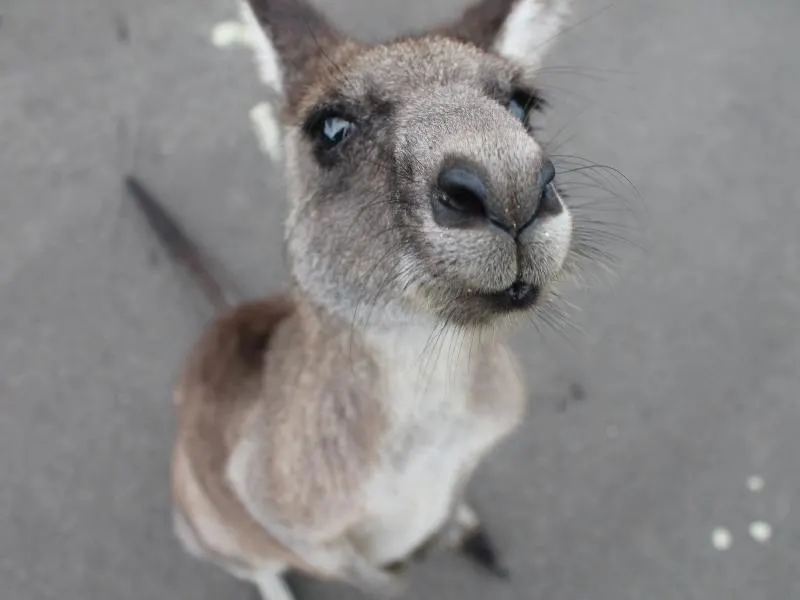
I have seen kangaroos and wallabies all over Queensland and you really don’t have to go too far from the major cities to spot them.
In my opinion one of the best areas to spot kangaroos and wallabies in Queensland is at Cape Hillsborough National Park near Mackay.
Every morning at dawn the animals come down to the beach to eat the seed pods that are washed ashore. It is also a fantastic opportunity to take some amazing photographs so make sure you take your camera with you.
Stay at Cape Hillsborough Nature Tourist Park overnight and walk down to see these uniquely Australian marsupials have their breakfast!
Read more – How to see kangaroos at dawn on the beach at Cape Hillsborough
Koala
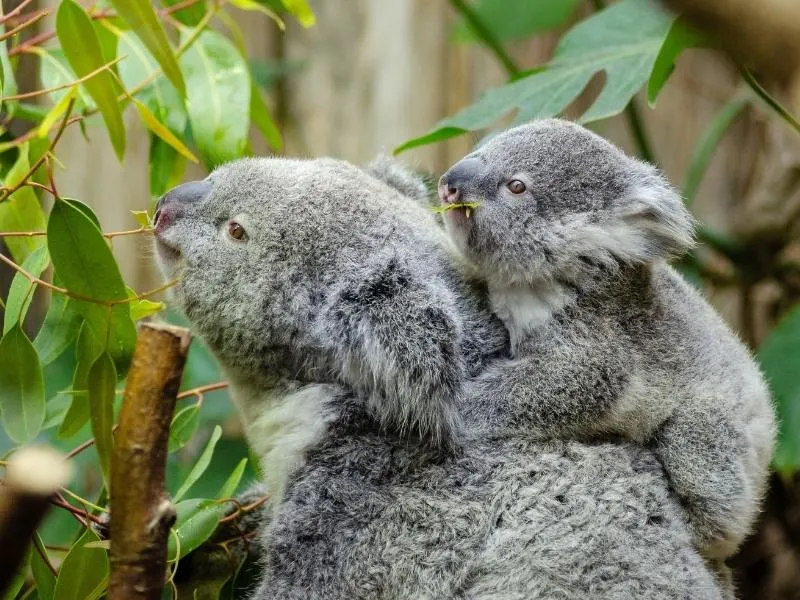
Koala have to be at the top of most people’s must see list when coming to Australia. Of course there are many places you can see koala close up for example at Lone Pine Koala Sanctuary in Brisbane.
There is nothing more rewarding than spotting a koala in the wild. Koala means ‘no drink’ because they seldom drink as they get the moisture they need from their diet though they may occasionally come down from trees in search of water.
Throughout Queensland you will see signs for koala but actually seeing one can be difficult. They are found in various habitats including coastal areas.
If you want to see koala one of the best places in Queensland is at Noosa Heads a 2 hour drive north of Brisbane. There is a Facebook group called Noosa Koala Sightings which I would recommend checking out too as it has photographs of up to the minute sightings.
If you live in Victoria and want to see koala and have a great break at the same time why not plan a visit to Phillip Island.
Learn more – A day at Lone Pine Koala Sanctuary
Platypus
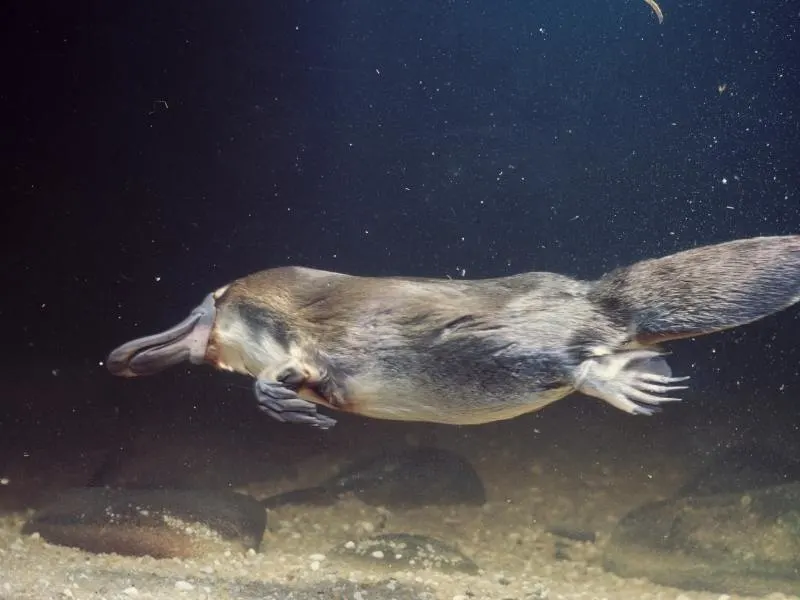
One of the best areas to spot the elusive platypus is at Broken River in the Eungella National Park (80 kms from Mackay.)
The best time to spot a platypus is at dusk and dawn or on days where it is not too sunny. We visited on 3 occasions and spotted platypus twice.
At Broken River there is a viewing platform where you can sit quietly and wait for the creatures to appear.
Read more – How to see platypus at Broken River
Cassowary
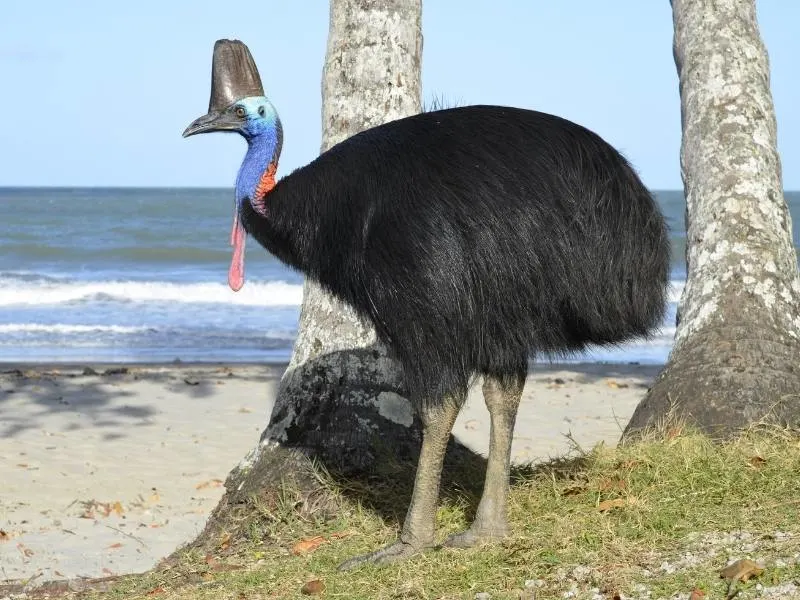
I must admit to finding this bird rather scary! The bird is Australia’s largest flightless bird and one with a reputation for disembowelling humans with its massive claws!
The cassowary is found in the rainforests of North Queensland.
Standing as tall as an adult human these birds are not to be messed with. They eat fruit and play a massive part in the survival of the rainforest through spreading and germinating seeds.
Find out more about where to see cassowaries in the wild on the website – Cassowary Recovery Team – which lists some great locations in North Queensland where you can find these beautiful birds.
Don’t miss the big cassowary in Mission Beach! One of Australia’s many ‘big things’ to add into your itinerary!
Dingo
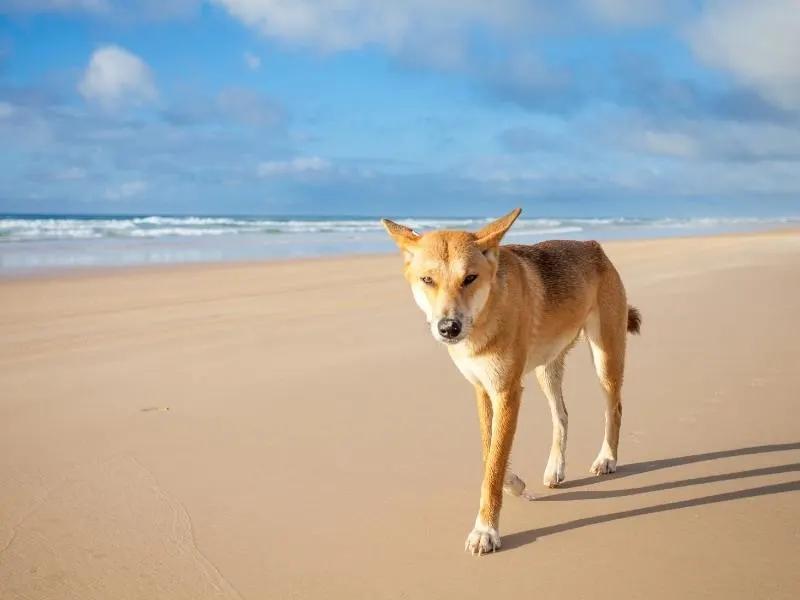
Dingoes are found all over Australia and thought to be descended from south Asian wolves. They are adapted to every habitat and are found all over the country except Tasmania.
Dingoes vary in colour depending on the environment in which they live (sandy coloured near beaches but darker colour in forested areas)
Dingoes hunt in packs and generally at night and are carnivores.
They are considered to be pests in areas other than national parks where they are classed as native wildlife.
One of the best places to see dingo in Queensland is on Fraser Island the world’s largest sand island.
Fraser Island is an Australian UNESCO World Heritage Site and was listed in 1992.
Crocodiles (salt water and fresh water)
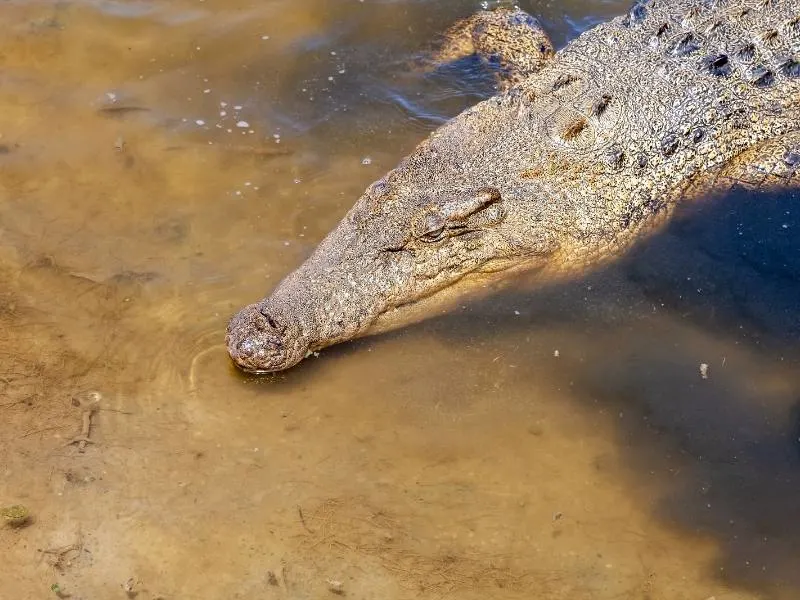
There are both freshwater and saltwater crocodiles in Australia. Saltwater crocodiles can grow up to 3/4 metres in length.
Having lived in an area considered crocodile country I know just how important it is to be fully aware of the dangers. Nearly every year there are crocodile related attacks in Queensland and some are fatal. Do not take any chances – check out the government guidance on being Croc Wise.
If you want to see crocodiles the safest way is to take a river cruise in North Queensland such as Hartley’s Crocodile Adventures Cruise or the Daintree River Cruise.
Sea Turtle
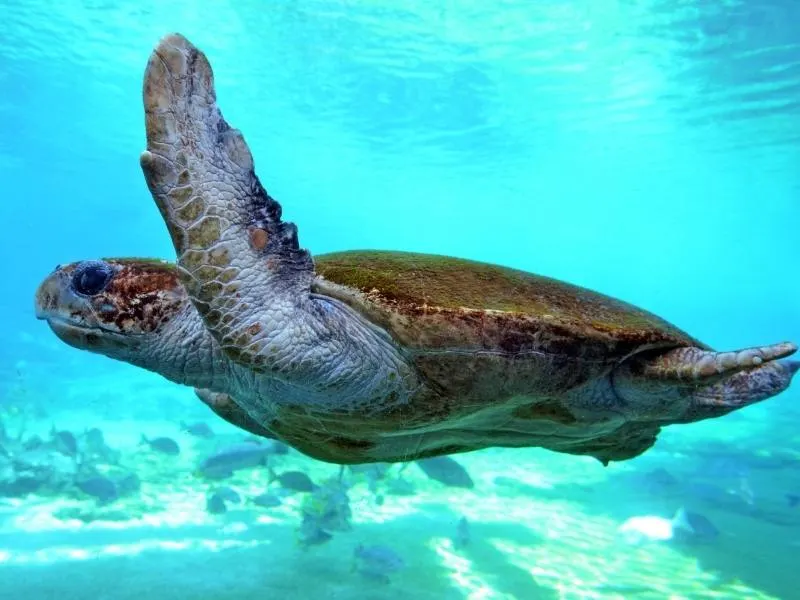
There are 7 species of sea turtle in the world and 6 of those can be found off the coast of Queensland.
Bundaberg is the place to head to witness 4 different species of turtle lay and hatch their eggs.
Between November and March at Mon Repos Conservation Park green, loggerhead, leatherback and flatback turtles lay and hatch their eggs.
It is essential to book your encounter and follow all advise given – book through the Bundaberg Information Centre.
Read more – 25 books about Australian animals to share with children
Humpback whales
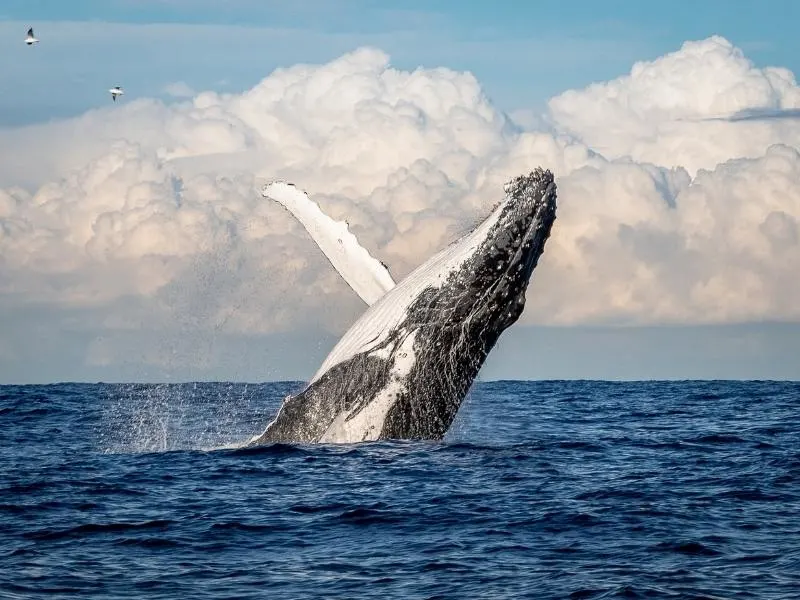
Between June and November the whales make their way on their annual 10,000 migration from Antarctica to the warmer waters off North Queensland to breed.
Seeing whales along the coast is pretty much guaranteed during those months and there and many whale-watching tours to choose from depending on your location in Queensland.
As we are very lucky to be living on Moreton Bay (an hour north of Brisbane) we are able to walk to the boat to go whale watching. Over 18,000 whales travel through the waters off Queensland and this must be one of the most exciting experiences one can have with nature.
Dugong
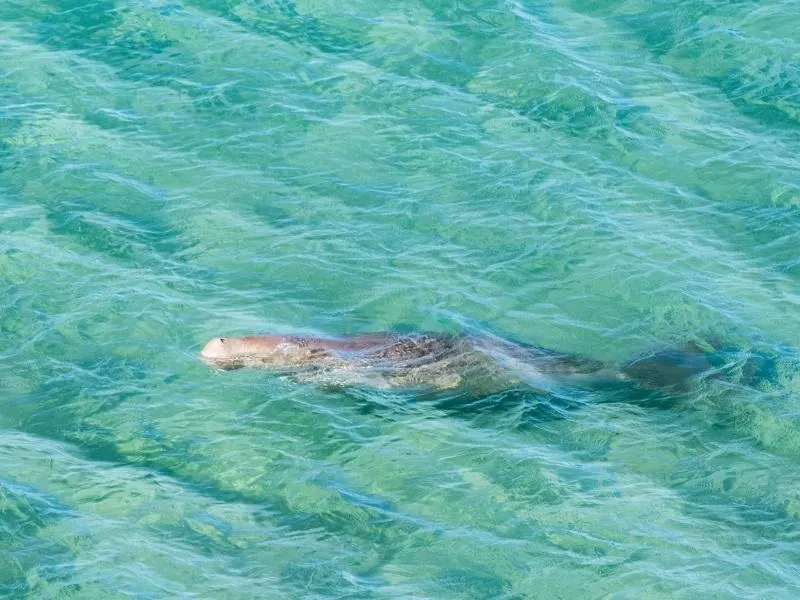
Dugongs are found in the Moreton Bay area too! These are not manatees though they are classified in the order Sirenia of which there are 4 species of which the dugong is one! They are large herbivorous marine mammals that like to hang around on the bottom of warm shallow bays and mangroves.
In Moreton Bay Marine Park dugongs, as well as other species of aquatic animals such as whales, dolphins, sharks, rays and turtles, can be spotted.
Flying foxes
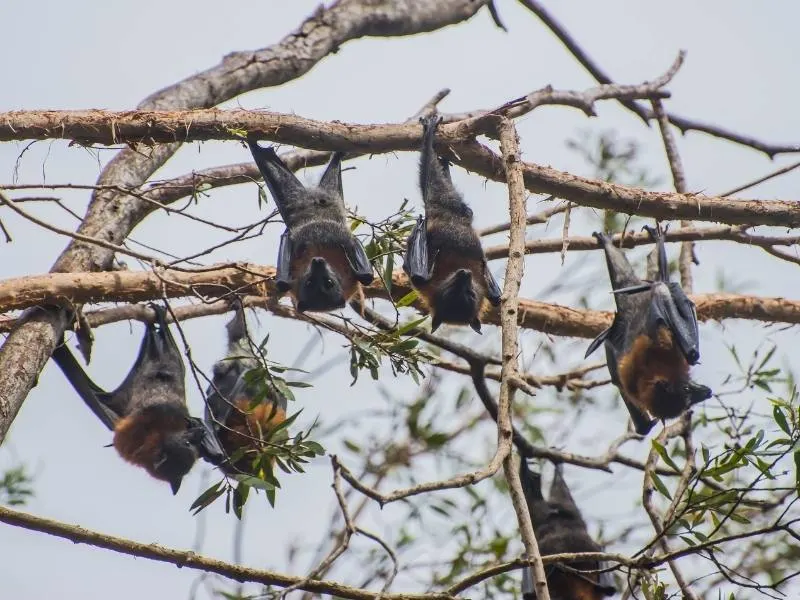
There are 4 species of flying fox in Queensland though the population of 2 of the species has been declining steadily over the past 100 years with a prediction that they could become extinct by 2050 (source – Animals Australia)
We live near the botanical gardens in Redcliffe which has a healthy colony of 3150 flying foxes (and enjoy watching them every evening as they fly off in search of a meal of nectar, flowers and fruit.)
They play a major role in pollinating and dispersing seeds and are an important player in the ecosystem. Unfortunately thousands of flying foxes are shot each year or become tangled in netting on fruit trees. They then experience a long lingering death (if they have a pup it will die too).
Possum
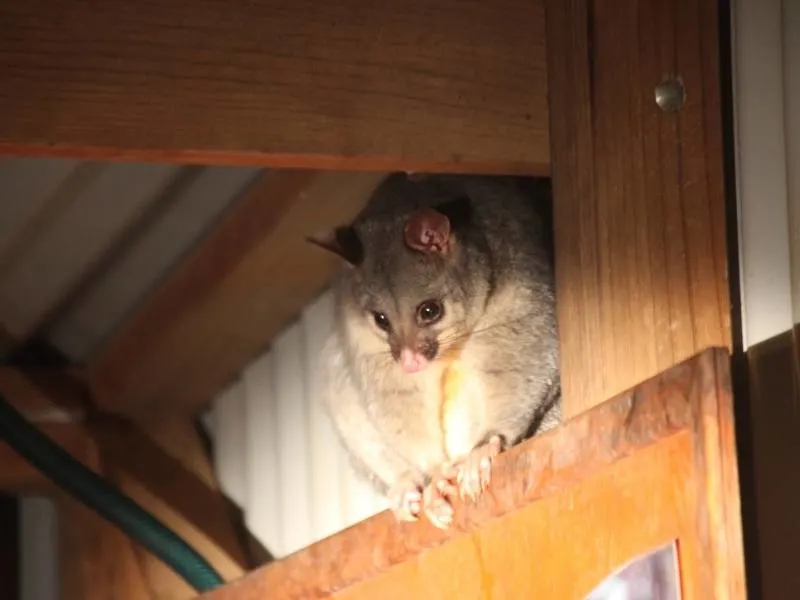
These are just the cutest little critters! Possums are small nocturnal mammals with 23 species found living in Australia.
Possums love fruit and vegetables and may move into your house roof to seek shelter. They can be found all over Queensland.
A possum was living in the hotel we stayed at in Bowen. After cyclone Debbie in 2017 she returned with a baby they named…what else but Debbie!!!
Echidna
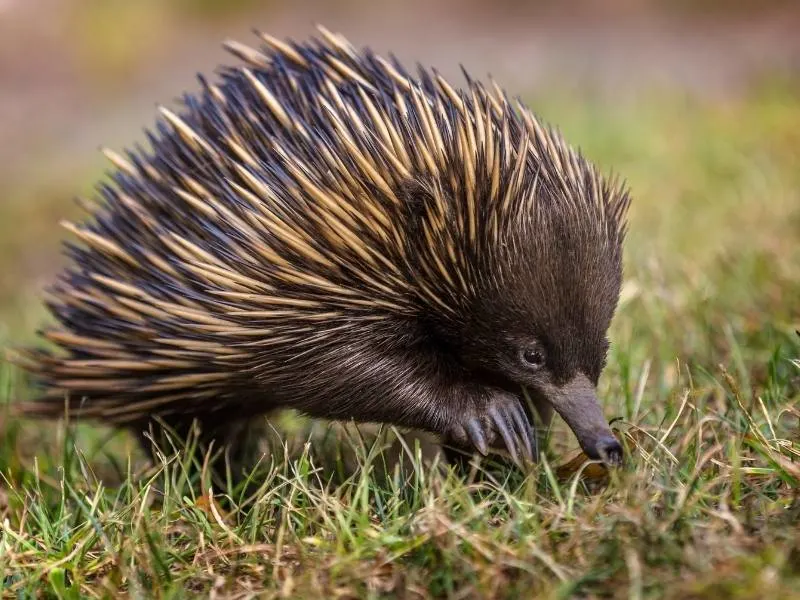
Echidna are mammals and there are 5 sub-species found in Australia. They can be found all over Australia including in Tasmania. Echidna live on a diet of ants, termites and worms and have an extremely long tongue! They are mainly active at night.
Echidna’s are unfortunately often the victims of dog attacks and road traffic accidents.
Bilby
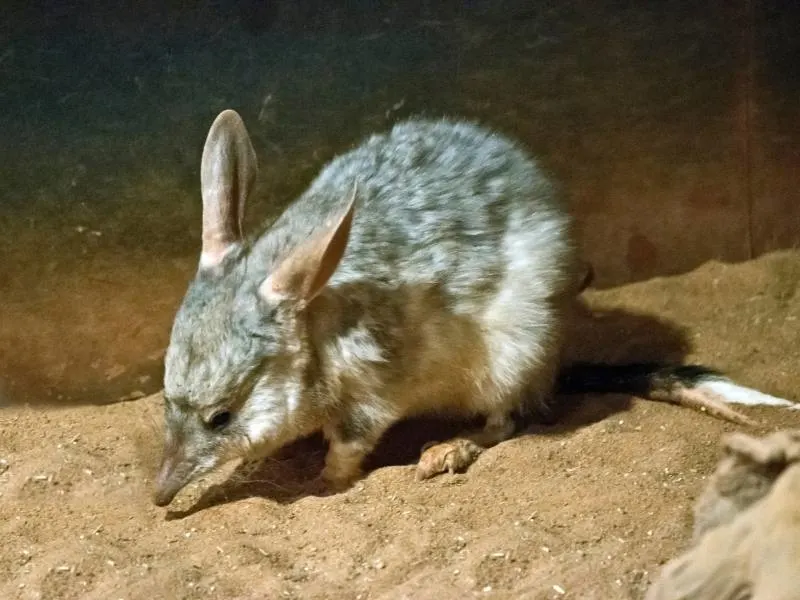
How cute are these guys? Bilby’s are marsupial omnivores and though they were once found over 70% of Australia they are now only found in a few places. There were even 2 species of which one – the Lesser Bilby is now extinct.
The remaining species of Bilby – the Greater Bilby is endangered. If you want to see a Bilby the place to head is Charleville. There you will find the Charleville Bilby Experience and centre of the Save the Bilby Fund.
Although closed presently due to Covid restrictions the centre is a great place to learn all about these cute little Australian marsupials.
Important information about Australian animals
- NEVER approach Australian wild animals – if you think an animal is sick or injured call the RSPCA on 1300 ANIMAL (1300 264 625)
- NEVER feed a wild animal.
- You can ONLY care for injured wildlife only if you have a rehabilitation permit.
- I f you want to learn more about caring for Australian wildlife Wildcare based in SE Queensland offer a number of courses.
- For more about visiting Queensland and areas check out the following great websites – Visit Queensland Visit Cairns and Visit Mackay Region
Further information for visiting Queensland
I have lots of posts all about visiting Australia and a number of these are focused on the beautiful state of Queensland. With an enviable climate, wonderful wildlife, stunning beaches if Queensland is your destination these posts will help you get the best of your visit!
- My ultimate guide to Australia has links to every post I have written about Australia and is great starting point when planning your visit.
- My post all about the top things to do in Queensland gives an idea of some of the amazing places to visit in the state.
- If you are traveling along the coast check out my posts about Mackay, Whitehaven Beach in the Whitsundays and Bowen.
- If you are visiting Brisbane you can find out more about what there is to do in and around the city including Mount Tamborine and the Sunshine Coast Hinterland.
